
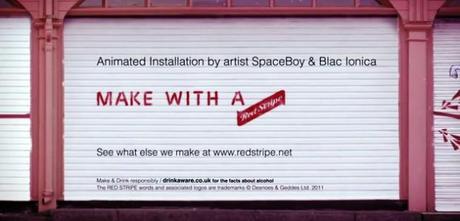
What have got in common an artist from space; an East London creatively led visual communication studio, a Jamaican beer with attitude and Edinburgh’s Newhaven fish market? No it isn’t the start of some famous Scottish joke. It is, in fact, the union of forces behind the latest Red Stripe sponsored art-venture.
The project, a stop-motion piece of great insight and beauty, wants to “explore the D.I.Y. experimental studio culture that Jamaica fostered in the 1970’s when Dub and Reggae projected a visionary sonic force onto the world stage”. It sees coming together the Edinburgh based artist Mike Inglis (a.k.a. Spaceboy 1966) and the renowned East-London studio Blac Ionica. Both parties have combined their efforts to create a piece of work with two lives, an artwork that embodies the spirit and the attitude it wants to celebrate and resembles, in its process, the D.I.Y. culture it wants to explore; and since this is a multilayered project, let’s look at it step by step.
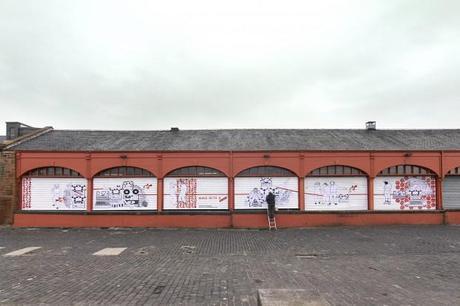
The project’s groundwork has been laid by Mark Inglis (A.K.A. Spaceboy 1966). With the installation ‘Black Ark’, he has taken over the shutters of the old Edinburgh’s Newhaven fish market and attempted to transform the space into something else, a new shrine to the buzz and energy of the Jamaican way of life. With the help of paint, paper and a (few) red stripe(s), the artist formed the narrative backbone (frame-by-frame i.e. shutter-by-shutter) for the stop-motion animation to come, providing a direct link between the site and the studio culture he wants to celebrate. At the center of the narrative there’s a four track reel to reel from where everything starts, completing the piece is a series of fishing boat skeletons evocating the spirit of the BLACK ARK, which is not only the name of the piece, but it was also the most progressive studio in Jamaican history. The fish market arches supply the roof to the shrine and the narrative, giving the installation that earnestness that comes from hard-working places and the direct tie to the ocean. The name ‘Black Ark’ does the rest, providing all the different layers of meaning that can be given to the word ark.
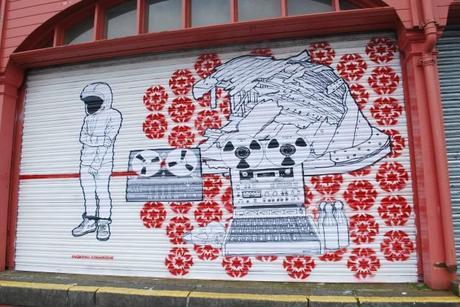
Even though the installation is a finished work of art in its own right, it was only the beginning. Once the shrine had been erected it needed to breathe new life. Enter Blac Ionica. The East London studio, together with Inglis, animated (in the true meaning of the word) the shutters, creating a new sensorial experience, a “comic in the street” piece of work that transformed the installation (and the site) into something else altogether. Add to the visuals the last layer needed, i.e. the true Jamaican sound of the 70’s and you’ve got yourself a winner.
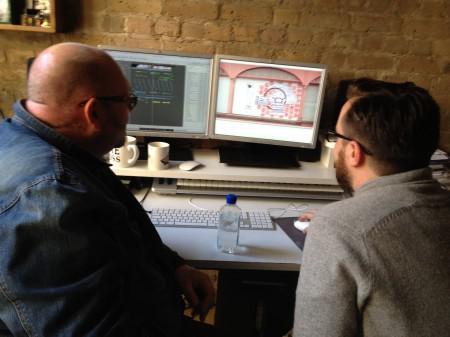
In this day and age where contemporary art in galleries has become ephemeral, meaningless and enslaved to the economic powers ruling the marketplace, the streets are the place where real art can be seen again. Every piece of work needs to fulfill a brief, but great works of art don’t only do that, they also need to provide a social commentary to the place and times in which they exist by creating an emotional bond with the viewer. ‘Black Ark’ does all that. It goes beyond the Jamaican studio culture of the 70’s, it provides a direct connection to Newhaven’s fish market as it is today. The video is evocative of the backbreaking jobs of the harbour, the solemnity of the working class and all the activities taking place in a fish market. At the same time it provides that association to the sea and the faraway Jamaican shores, capturing the viewer’s imagination and leaving him or her wanting for more. So sit back and enjoy Edinburgh’s Newhaven harbour, as you’ve never experience it before. If you close your eyes, that red stripe, might actually take you to Jamaica.
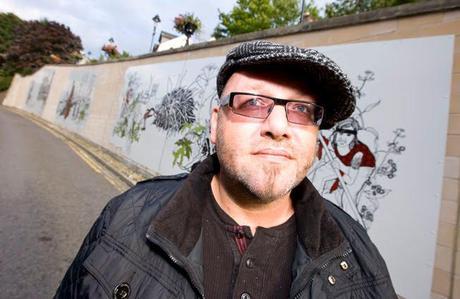
via
Post edited by guest blogger Carlo Formisano

